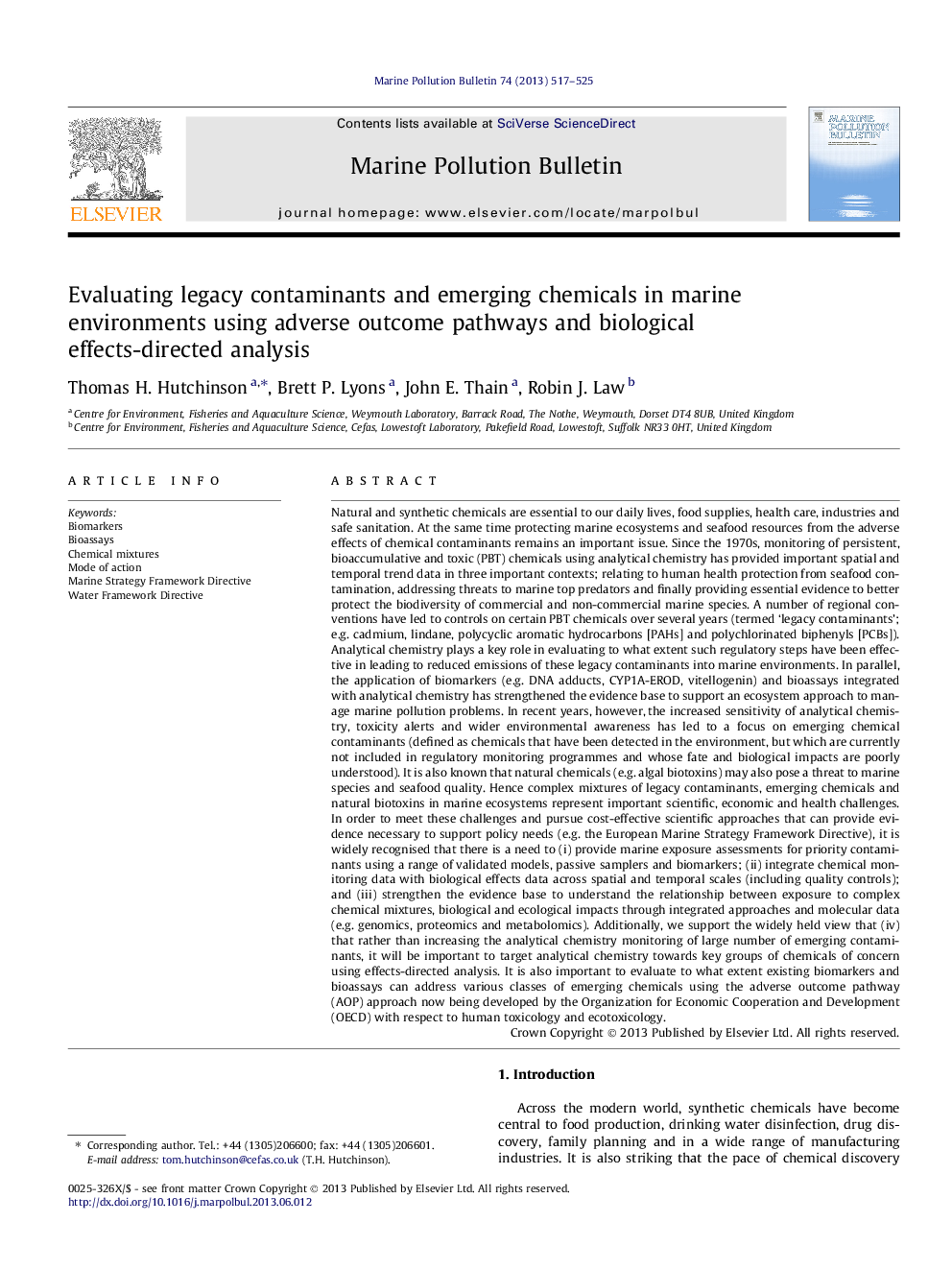| کد مقاله | کد نشریه | سال انتشار | مقاله انگلیسی | نسخه تمام متن |
|---|---|---|---|---|
| 4476776 | 1315641 | 2013 | 9 صفحه PDF | دانلود رایگان |

Natural and synthetic chemicals are essential to our daily lives, food supplies, health care, industries and safe sanitation. At the same time protecting marine ecosystems and seafood resources from the adverse effects of chemical contaminants remains an important issue. Since the 1970s, monitoring of persistent, bioaccumulative and toxic (PBT) chemicals using analytical chemistry has provided important spatial and temporal trend data in three important contexts; relating to human health protection from seafood contamination, addressing threats to marine top predators and finally providing essential evidence to better protect the biodiversity of commercial and non-commercial marine species. A number of regional conventions have led to controls on certain PBT chemicals over several years (termed ‘legacy contaminants’; e.g. cadmium, lindane, polycyclic aromatic hydrocarbons [PAHs] and polychlorinated biphenyls [PCBs]). Analytical chemistry plays a key role in evaluating to what extent such regulatory steps have been effective in leading to reduced emissions of these legacy contaminants into marine environments. In parallel, the application of biomarkers (e.g. DNA adducts, CYP1A-EROD, vitellogenin) and bioassays integrated with analytical chemistry has strengthened the evidence base to support an ecosystem approach to manage marine pollution problems. In recent years, however, the increased sensitivity of analytical chemistry, toxicity alerts and wider environmental awareness has led to a focus on emerging chemical contaminants (defined as chemicals that have been detected in the environment, but which are currently not included in regulatory monitoring programmes and whose fate and biological impacts are poorly understood). It is also known that natural chemicals (e.g. algal biotoxins) may also pose a threat to marine species and seafood quality. Hence complex mixtures of legacy contaminants, emerging chemicals and natural biotoxins in marine ecosystems represent important scientific, economic and health challenges. In order to meet these challenges and pursue cost-effective scientific approaches that can provide evidence necessary to support policy needs (e.g. the European Marine Strategy Framework Directive), it is widely recognised that there is a need to (i) provide marine exposure assessments for priority contaminants using a range of validated models, passive samplers and biomarkers; (ii) integrate chemical monitoring data with biological effects data across spatial and temporal scales (including quality controls); and (iii) strengthen the evidence base to understand the relationship between exposure to complex chemical mixtures, biological and ecological impacts through integrated approaches and molecular data (e.g. genomics, proteomics and metabolomics). Additionally, we support the widely held view that (iv) that rather than increasing the analytical chemistry monitoring of large number of emerging contaminants, it will be important to target analytical chemistry towards key groups of chemicals of concern using effects-directed analysis. It is also important to evaluate to what extent existing biomarkers and bioassays can address various classes of emerging chemicals using the adverse outcome pathway (AOP) approach now being developed by the Organization for Economic Cooperation and Development (OECD) with respect to human toxicology and ecotoxicology.
Journal: Marine Pollution Bulletin - Volume 74, Issue 2, 30 September 2013, Pages 517–525